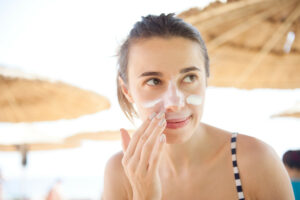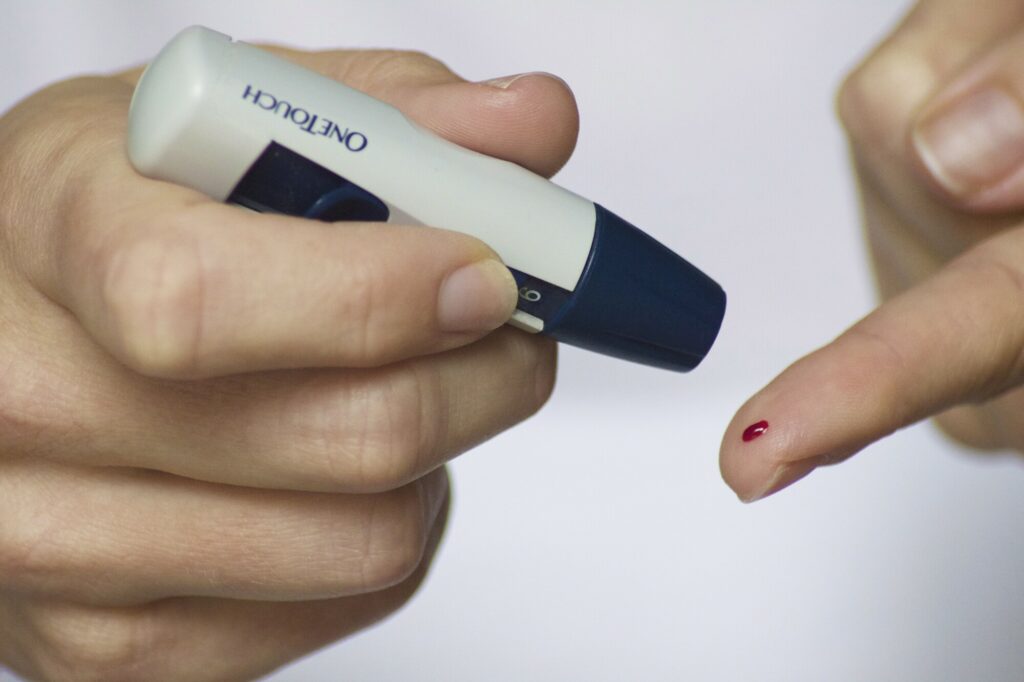Ingredients to Look for in the Best Cream for Rosacea

Did you know that the skin is the human body's largest organ? Due to its porous nature, the skin absorbs whatever you put on it - between 60 to 70 percent of all contaminants, depending on the type of product.
It's no wonder that so many of us live with numerous skin conditions, ranging from eczema, rosacea, dermatitis, psoriasis, and more. While not all of these conditions result from the products you put on your skin, many are certainly exacerbated by them.
If you're looking to get your rosacea under control, here are the ingredients to look for in the best cream for rosacea, and those to avoid!
What is Rosacea and What Causes It?
This is an inflammation condition of the skin. Rosacea causes the blood vessels under the skin to dilate (enlarge), resulting in a flushed or red-tinged appearance of the skin. It generally tends to affect the upper cheek and nose area.
Other symptoms of rosacea include dilated capillaries and veins as well as small, hard spots under the skin, called pustules. During rosacea flare-ups, the skin tends to feel warm, tight, and sensitive when using certain products.
While there is no exact known cause, there are several triggers that can kickstart a flare-up:
- Significant temperature changes - i.e. changing from a cold to a hot environment as well as dry central heating
- Humid, hot, and sunny weather
- Your lifestyle - high amounts of stress are often triggering
- Exercise
- Dietary choices, such as caffeine and alcohol
The key to fully understanding rosacea and its cause is to identify what the triggers are. They will vary from person to person. The best thing to do is take note of your flare-ups and what you did/ate/wore/or where you were beforehand. Keeping a trigger diary is also recommended.
Ingredients to Look for in the Best Cream for Rosacea
When you're managing a skin condition such as rosacea, the products and ingredients you put on your skin can make a world of difference. In short, it's the difference between soothing your skin or exacerbating the condition.
As a general rule of thumb, always shop for skincare products formulated specifically for rosacea-prone or very sensitive skin. It's also a good idea to opt for natural, organic ingredients as these tend to minimize irritation significantly.
Look for these specific skincare ingredients when managing your rosacea:
- Soothing chamomile - this ingredient contains azulene which is a natural anti-inflammatory and helps to calm the skin
- Rosehip - this helps to heal and strengthen the skin barrier to reduce flare-ups
- Niacinamide - another great ingredient which reduces inflammation, redness, and the size of pores
- Hydrosols such as Rose, Helichrysum Italicum, or Melissa officionalis - they are water-based ingredients and a by-product of distilling essential oils. They add moisture back into the skin
- Aloe vera - ideal for alleviating dryness, itchiness, and general skin irritation
- Calendula - a very rich, nourishing ingredient that adds moisture to the skin
- Blue tansy - a popular essential oil that nourishes and soothes inflamed skin
Before you purchase a skincare product, always make sure you do a small skin patch test first. You could also ask whether the brand offers testers or travel-size products before you commit to a full-size product. It's always best to trial a product beforehand so you can avoid further skin irritation if the product just doesn't agree with you.
A Note on Toners
Not everyone might agree on the use of toners for your skin - especially if you struggle with rosacea. However, the right toner with the right ingredients could really make a difference.
The purpose of a toner is to balance the skin's pH levels. For people with rosacea-prone skin, the skin's pH levels tend to be very alkaline, which can result in skin irritation. Alkaline environments allow for micro-organisms to flourish on the skin, leading to flare-ups.
Opt for a toner with any of these soothing ingredients: aloe vera, chamomile, green tea, cucumber, oatmeal, niacinamide, and hyaluronic acid.
Simple Rosacea Care Tips
When it comes time to wash your face - whether it's at the beginning or end of the day - always do so with a gentle hand. One of the best products to use is organic bamboo facecloths, especially when removing makeup.
Try to avoid scrubbing your skin with rough-textured facecloths as this can only worsen redness and irritation. The key is to be as gentle as possible when cleaning the skin.
Make sure to clean your facecloths after one or two uses and let them air dry completely to avoid spreading bacteria across your skin. For super sensitive skin, always use a natural laundry detergent, too.
Wash your skin with lukewarm water, avoid scalding hot water which can only exacerbate inflamed skin.
Skincare Ingredients to Avoid
One of the biggest pitfalls to correctly managing any skin condition is the ingredients you put on your skin. With rosacea, many people tend to opt for the wrong skincare ingredients due to a simple lack of knowledge. Rosacea can often look like acne and is then treated incorrectly with harsh, drying, and inflammatory products.
Before you purchase your skincare products, always scan the ingredient list and make sure to avoid these specific ingredients:
- Any type of alcohol-based ingredients
- Witch Hazel
- Any form of synthetic fragrance
- Menthol
- Peppermint
- Eucalyptus
- Coconut oil which tends to clog pores
- Emulsifiers - often found in water-based skincare products
- Petrochemicals (mineral oils or petroleum)
- Parabens and SLSs
The general rule when managing rosacea is less is best. This means that the fewer ingredients in your skincare, the better. Stick to simple, organic, natural, and nourishing ingredients and your skin will thank you.
Looking for an Online Pharmacy You Can Trust?
Luckily, rosacea is a very treatable condition that you can easily manage with the right skincare products or medication.
At PricePro Pharmacy, one of Canada's most reputable online pharmacies, we offer a range of products and medications at your fingertips. If you're on the hunt for the best cream for rosacea or medication to manage the condition, take some time to explore here for more on what we can offer you.
Works Cited
External link: https://www.ncbi.nlm.nih.gov/pmc/articles/PMC1651599/
External link: https://www.webmd.com/skin-problems-and-treatments/pustules-facts
Internal link: https://www.pricepropharmacy.com/how-can-i-order-medication-online-from-a-canadian-pharmacy/
Internal link: https://www.pricepropharmacy.com/categories/rosacea/








